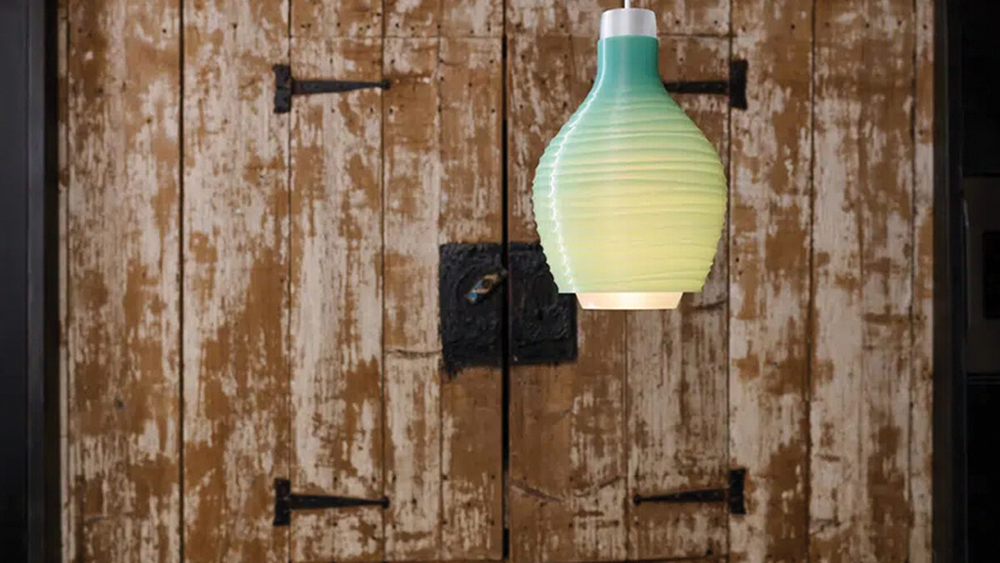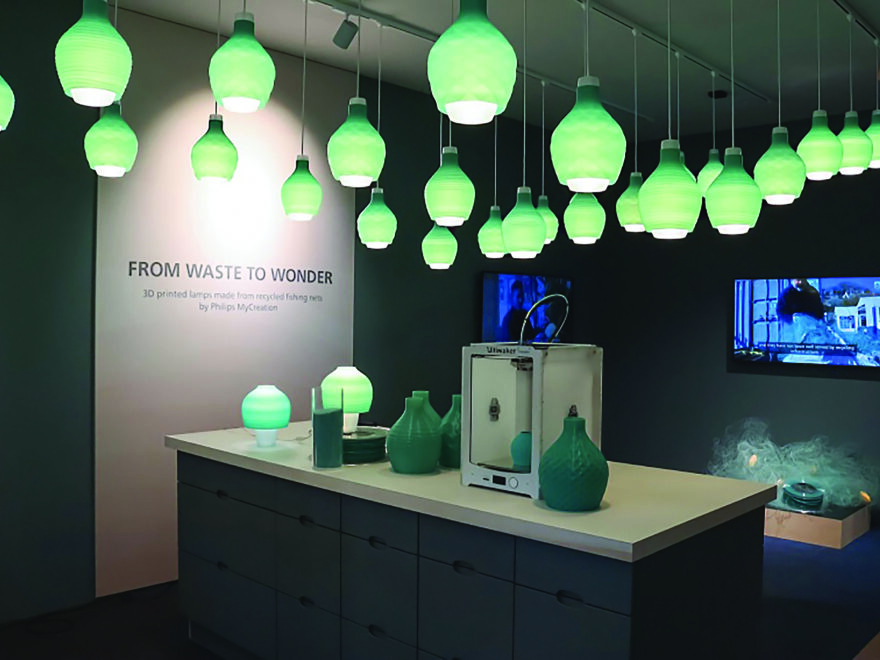Sustainability is arguably one of the most important issues of our time. Long-term economic growth must not have a negative impact on our commonly shared planet, as it has done in the past.
To achieve future economic prosperity, industries must address current strategic and operational challenges that are currently impacting the planet. On the political-ecological side, it is the UN Paris Agreement that is forcing industry to act.
Today it is possible to build houses with appropriately sized 3D printers, Signify as part of their vision for the future is harnessing 3D printing to achieve practical lighting solutions at scale, while at the same time meeting the sustainable challenges.
The message is clear: Future economic success must go hand in hand with sustainable thinking and action.
As part of Signify’s 3D initiative nine key elements have been identified.
1. Using recycled and bio-circular materials which have a story to tell
A key component of ecological sustainability strategies is to move away from the use of virgin materials to produce goods. Using fewer fossil resources – and more recycled and bio-circular sources instead. Bio-circular mass balanced raw materials are materials from ISCC PLUS (International Sustainability and Carbon Certification) certified waste streams and residues. These can be tall oil from the wood processing industry or used cooking oil, among other inputs. The bio-circular granulate used as raw material for Signify’s 3D-printed luminaires is ISCC PLUS certified and 71.5% renewable. Based on the colours and additives used in production alone, the officially mass-balanced rate is at least 55%.
2. Less components for more flexibility
Apart from the issue of source material, 3D printing manufacturing offers several advantages. One of these is the integration of multiple functions into a single component, e.g. the integration of the strain relief into the housing of a luminaire. In this way, two screws and a plastic part are typically removed from the assembly. As an important side effect, this allows for easy and quick disassembly, as the strain relief does not need to be separated into one or more waste streams. Finally, one assembly step is taken out of the production process, which increases its efficiency.
Where conventional production technology required two parts and a corresponding connection, a single part is now sufficient.
3. The assembly with disassembly in mind
When the life of a luminaire comes to an end and it is time to recycle it, it is important that disassembly is as simple as possible. A 3D printed luminaire consists not only of printed materials, but also of non-printable components such as LEDs, drivers (which in turn consist of electronic components) and metals (such as heat sinks and screws). In End-of-Life recycling, the various components need to be disassembled and sent to separate waste streams, where they can be appropriately recycled. 3D printing greatly assists with the reduction of screws and glue required during assembly.
4. Closing the loop of recycling
Components such as glass and metals can be recycled very well, and the recycling rate is already quite high. With plastics, things are a bit more complex. There are many types of plastics, all with different properties, such as melting temperature. It is difficult to separate the different types of plastic when they are mixed. Polycarbonate is a high-quality plastic that can be recycled when kept separate. Therefore, Signify has organized dedicated pilot programs in the U.S. and EU to advance initiatives within overall industry to show how luminaires in particular, including PC, can be effectively recycled at the end of their life cycle.
5. Lowering carbon emissions in materials and transport
Research shows that better air quality by reducing emissions from fossil fuel combustion and other sources to slow climate change would improve human health and prevent economic losses. In a 2020 study, Philips Innovation Services, Environment & Safety compared the Life Cycle Assessment of a traditionally manufactured downlight with a die cast aluminum housing with a 3D printed downlight, both delivering the same amount of light. The study showed significant savings of up to 76% in material supply and manufacturing and up to 28% in transportation.

6. Carbon neutral production
By 2020 Signify became carbon neutral, signaling the start of phase 2. Having met all their initial goals ahead of schedule Signify started the “Brighter Lives, Better World” initiative.
Beyond carbon neutrality: Signify’ s 2025 vision
- Double the pace of the Paris Agreement
- Double circular revenues to 32%
- Double our revenues for brighter lives which benefit society to 32%
- Increase climate action revenues to 72%
- Zero waste to landfill for all manufacturing sites
- Supplier sustainability performance of 95%
7. Producing on demand instead of on stock
Environmental aspects play an important role in reducing global warming – lowering CO2 emission rates is one of the goals in designing a sustainable supply chain. A big step toward supply chain sustainability is the minimization of inventory, as warehousing has the potential for product waste and harmful greenhouse gas emissions. Since 3D printed luminaires are produced only on demand, there is no need to stock finished goods. Further to this Signify have a program underway whereby printing facilities are put in place closer to the end customer using them to minimize transport as much as possible.
8. Zero waste production
There is only one thing better than recycling waste: producing no waste at all. That is why Signify is actively investing in “Towards Zero Production Waste” program to improve yields at all our production sites. In filament production, there are some rejects that are shredded and used to make new filament. In the production of printed parts, there can be some misprints
and leftovers. These misprints and leftovers are granulated and sent back to filament production to make new filament. In this way, production waste is fully reused: Signify uses its own production waste.
9. Resulting in Sustainable products
3D printed lighting products are designed for circularity and thus follow the “reduce-reuse-recycle” approach. Being energy-efficient and having a long product lifetime, 3D offerings are not only environmentally friendly but also cost-effective.
The energy efficiency of our products can vary depending on the product series, ranging from 100 to 180 lm/W. Our lamp-based products can reach 210lm/W when using Ultra-Efficient A-class bulbs. We prioritise energy efficiency in our designs because energy consumption during the use phase is the largest part of Life Cycle Assessments (LCA) for luminaires. In addition to energy efficiency, our products have a long and reliable lifetime of 50,000 to 100,000 hours. Signify strive to provide products that are not only energy efficient but also durable and reliable, hence our 3D printed luminaires are part of the Green Switch program and are aligned with the Lighting for Circularity approach of Signify.


